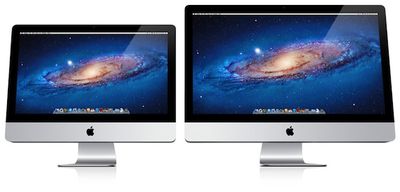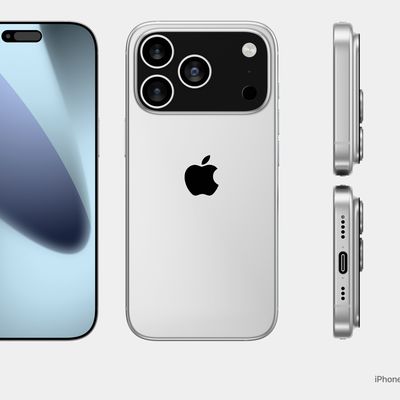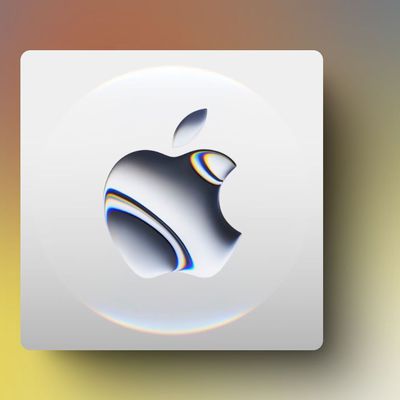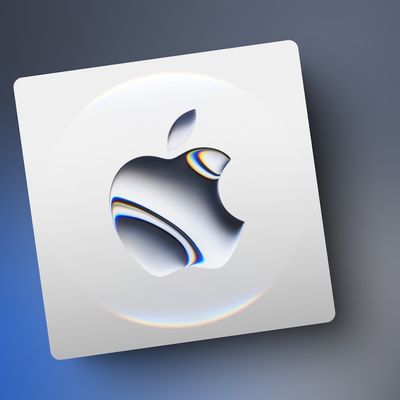As part of ABC News' roundup of the latest MacBook Pro rumors, Joanna Stern claims that not only the MacBook Pro family but also the iMac line is set to gain ultra high-resolution "Retina" displays.
The laptop will see the introduction of the “Mac Retina Display,” which is said to have a very high resolution. ABC News has similarly heard from its own sources that both the next MacBook Pro and the iMac would be getting very, very high resolution displays. Apple refreshed its new iPad with a Retina Display in March.
The MacBook Pro has long been the focus of the Retina or HiDPI display rumors, but it seems natural that Apple would want to move all of its displays to the standard. What is unclear, however, is just how Apple will implement the increased resolution given that most Macs already approach Retina resolution at typical viewing distances.
Many have assumed that Apple will follow the model used in the iPhone and iPad, doubling the resolution in each dimension with a screen carrying four times the pixels of its predecessor. That specific suggestion has already been made in regards to a rumored 15-inch MacBook Pro with 2880x1800 display compared to the 1440x900 display in the current model.
But as screen sizes get even larger, quadrupling the number of pixels starts to bump up against the hardware capabilities of graphics chips and display interface standards. While a 17-inch MacBook Pro coming in at a Retina resolution of 3840x2400 might be possible, the more significant issues surface with the iMac, which is also gaining higher-resolution displays according to today's report.
The 21.5-inch iMac would see a pixel count in the range of the 17-inch MacBook Pro as its 1920x1080 resolution would be bumped to 3840x2160, but the 27-inch iMac would move from its current resolution of 2560x1440 to a monster Retina display at 5120x2880. The same panel could also be used in a revised Apple Thunderbolt Display should hardware be able to support the resolution.

Consequently, some have suggested that Apple would increase display resolution on its Mac lines by a smaller amount than seen on iOS devices, with current variation in pixel density among Mac models already introducing some flexibility in interface element sizes. But with most Mac models offering pixel densities in the range of 100-130 pixels per inch (ppi), moving to a somewhat higher density such as 160-170 ppi to qualify as a Retina display still imposes some difficulties for developers and users.
While user interface elements do vary in physical size depending on the machine they are displayed on, they are designed to be usable in the typical range of 100-130 ppi. Moving to something in the range of 160-170 ppi, for example, could result in user interface elements becoming too small for users to click on with ease unless applications are specifically updated with new elements designed for that pixel density range. Otherwise, elements could be scaled to approximate the physical size seen on lower-resolution displays, but this scaling would undoubtedly degrade image quality.
David Barnard has argued that Apple could still use the pixel doubling motif on larger Mac displays without necessarily having to quadruple the number of actual pixels if users would be willing to accept a smaller workspace than seen on current machines. In one example, Barnard describes how rather than moving the current 2560x1440 27-inch iMac all the way to 5120x2880, Apple could instead offer a display at 3840x2400 that would present itself with a Retina workspace of 1920x1200.
Apple could build a 3840 by 2400 pixel 27-inch screen that presented itself as a pixel doubled 1920 by 1200 pixel display. That’s effectively an 84ppi screen @1X and 168ppi screen @2X. [...]
What you should notice is that the text and UI elements are physically smaller on the current 109ppi iMac than they’d be on the hypothetical 84/168ppi 27-inch iMac. This may be frustrating to some users, but I actually prefer my old 94ppi 24-inch Cinema Display to any of Apple's higher PPI displays. I like that the system default 12pt text is larger. The sacrifice is in the usable workspace, and that’s a matter of taste.
So while Apple appears to face some challenges in bringing its Retina display concept to the Mac, the company seems to be committed to making the transition. It simply remains to be seen how the company will implement the move, as hardware rumors and hints within OS X Lion and Mountain Lion are certainly pointing toward Retina Mac displays sooner rather than later.





















